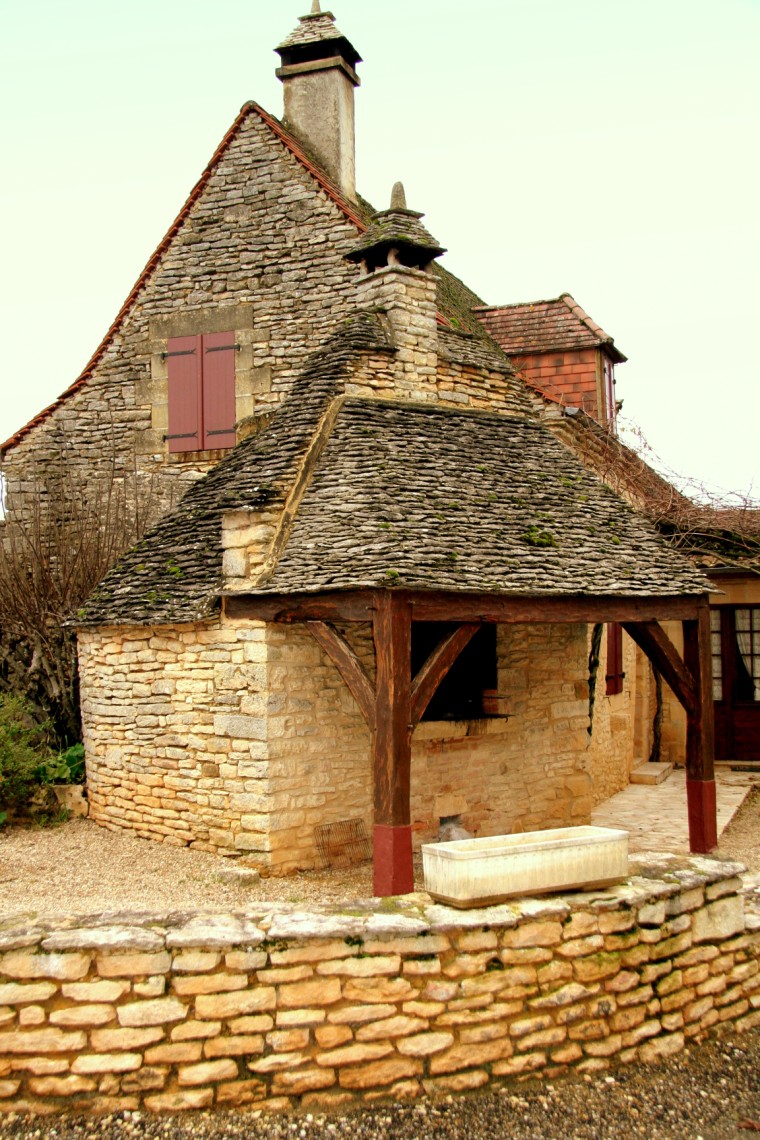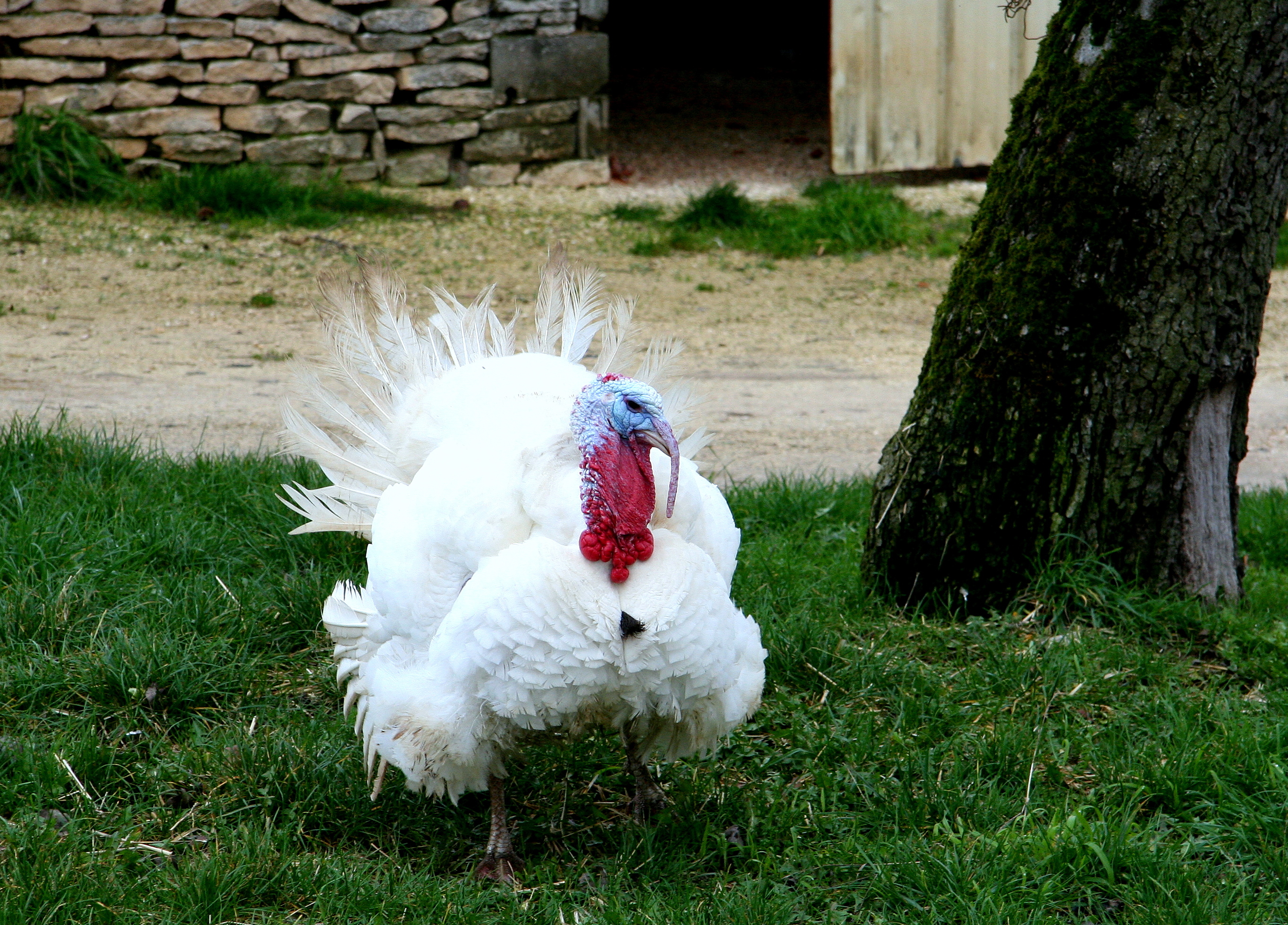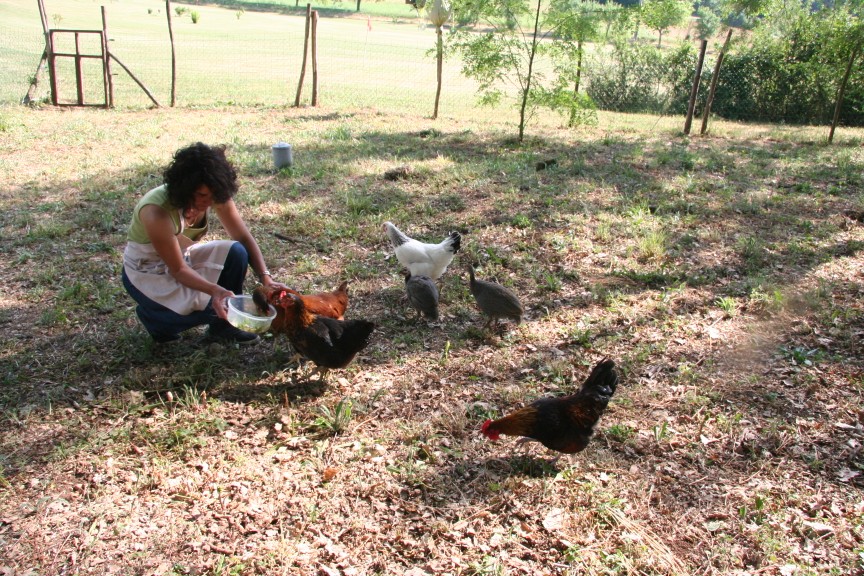Another lovely weekend -perfect for a stroll in the Dordogne countryside. This week we started our 8.5km easy amble at Saint Crepin, just a 15 minute drive from Les Crouquets.
Not long after we set off we met a gaggle of turkeys on the road ( well, only 3 actually, but they were making enough noise to constitute a gaggle!). I was amazed at the speed they could move at, almost as if they were still trying to avoid becoming last year’s Christmas dinner – not that they would fit in your average oven- they were HUGE!!
Further on we came across a very picturesque hamlet , a group of old buildings dating back to the 17th century. All the roofs were meticulously restored with the original roof covering of the region – lauze. These aren’t tiles but huge overlapping blocks of stone. They are extremely heavy & difficult to work with and they add an enormous weight to the building. Amar once helped a friend repair his lauze roof and he & his head (often bumped & scraped due to working with heavy stones in cramped conditions!) can testify to how labour intensive it is.
 I often see roofs round here with a small section of lauze at the bottom and the rest recovered in terracotta tiles, understandable I suppose but sad at the same time knowing that this unique craftsmanship is fast becoming a dying art. Part of the charm in living here is that I often imagine I’m part of another era . You can almost feel how people used to live – a welcome change from our past busy & stressful lives.
I often see roofs round here with a small section of lauze at the bottom and the rest recovered in terracotta tiles, understandable I suppose but sad at the same time knowing that this unique craftsmanship is fast becoming a dying art. Part of the charm in living here is that I often imagine I’m part of another era . You can almost feel how people used to live – a welcome change from our past busy & stressful lives.
St Crépin & Carlucet are listed as being among the most picturesque villages in the Perigord & it’s easy to see why.
Definitely worth a visit!




